Trivia Browser

▲
2
▼
The copyright notice in the sound test of OutRun for the Commodore 64 mistakenly lists the game as having come out in 1941.
Platform: Nintendo Entertainment System
▲
2
▼
 Popular conceptions about Nintendo's release history in Europe claim that their hardware was never released in the former Eastern Bloc until the 21st century. Rather, these countries instead saw the proliferation of various clone consoles called "Famiclones", such as the Dendy (a Taiwanese-built bootleg that achieved widespread popularity in the Commonwealth of Independent States, made up of the ex-republics of the former Soviet Union) and the Pegasus (which became as popular in Poland as the Dendy did in Eastern Europe). However, while Famiclones did indeed dominate the Eastern European gaming market during the 1990s, Nintendo was not only aware of this, but actively attempted to halt the spread of bootlegs in these regions in favor of officially sanctioned products.
Popular conceptions about Nintendo's release history in Europe claim that their hardware was never released in the former Eastern Bloc until the 21st century. Rather, these countries instead saw the proliferation of various clone consoles called "Famiclones", such as the Dendy (a Taiwanese-built bootleg that achieved widespread popularity in the Commonwealth of Independent States, made up of the ex-republics of the former Soviet Union) and the Pegasus (which became as popular in Poland as the Dendy did in Eastern Europe). However, while Famiclones did indeed dominate the Eastern European gaming market during the 1990s, Nintendo was not only aware of this, but actively attempted to halt the spread of bootlegs in these regions in favor of officially sanctioned products.In 1994, Nintendo made a deal with Steepler, the Dendy's distributor in Eastern Europe, to permit continued sale of the Dendy in exchange for equal distribution of the Super Nintendo Entertainment System and Game Boy in the Commonwealth of Independent States; official Russian releases of these systems even included Dendy stickers on the packaging to reflect the arrangement. Meanwhile, in various other parts of the former Eastern Bloc, Nintendo made deals with other third-party distributors; among others, the NES, SNES, and Game Boy saw official releases in Poland, Hungary, and the former territories of Yugoslavia and Czechoslovakia during 1993–1994.
Joshua Rogers video about Nintendo in Eastern and Central Europe:
https://www.youtube.com/watch?v=q75Re7deJC0
Russian-language articles about the Nintendo/Steepler deal:
https://web.archive.org/web/20190427025842/https://www.kommersant.ru/doc/94004
https://web.archive.org/web/20240601223552/https://dtf.ru/games/970617-legenda-o-slone-kak-it-kompaniya-steepler-sozdala-dendy-i-osnovala-rossiiskii-konsolnyi-rynok
https://www.youtube.com/watch?v=q75Re7deJC0
Russian-language articles about the Nintendo/Steepler deal:
https://web.archive.org/web/20190427025842/https://www.kommersant.ru/doc/94004
https://web.archive.org/web/20240601223552/https://dtf.ru/games/970617-legenda-o-slone-kak-it-kompaniya-steepler-sozdala-dendy-i-osnovala-rossiiskii-konsolnyi-rynok
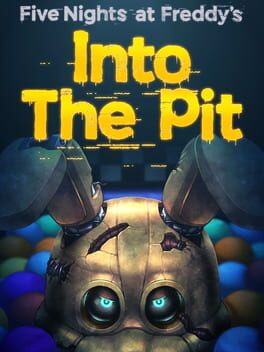
▲
1
▼
Five Nights at Freddy's: Into the Pit was originally supposed to release on August 8, 2024, the day of the Five Nights at Freddy's franchise's 10th anniversary. However, an error caused the game to be released one day early in Japan. As such, it was decided to release the game worldwide a day early as well, with the series' official Twitter account noting "It actually feels very fitting for a FNaF game to release EARLY!".
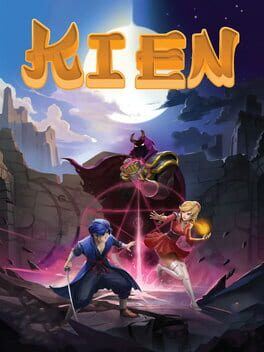
▲
2
▼
Kien was originally developed between 2002 and 2004 by AgeOfGames, a group of five Italian developers who had no prior experience making video games, aiming to be the first company in their country to develop a game for the Game Boy Advance. The game's release would end up being cancelled three separate times when multiple publishers picked up the game and then decided that releasing it would be too risky for sales. At the time, the game was completed and sent to gaming publications, with one known review appearing in the American magazine Nintendo Power in 2003. The game remained unreleased for over 20 years, but a prototype ROM of it did leak online at one point. Game designer Fabio Belsanti would be the only member of the game's original development team to remain at AgeOfGames, who had shifted to developing educational games to stay afloat. Eventually, with the rising popularity in retro games and lowered cost to produce GBA cartridges, AgeOfGames was able to release Kien in 2024 both digitally and on physical cartridges through retro game publisher Incube8 Games. The game's release garnered attention for it possibly having taken the record for the longest delayed video game release in history, surpassing Duke Nukem Forever and Beyond Good & Evil 2 by taking 22 years to release.
DidYouKnowGaming video:
https://www.youtube.com/watch?v=8RuAKtb2too#t=2128s
Assorted pre-release gameplay of Kien from the early 2000's on IGN's YouTube channel:
https://www.youtube.com/watch?v=ZPijGVE9G1U
https://www.youtube.com/watch?v=X-opVqCKlYA
https://www.youtube.com/watch?v=BfRViZPwHAM
Incube8 Games trailers:
https://www.youtube.com/watch?v=Ti1Ul0y6ZcQ
https://www.youtube.com/watch?v=AuuIAX-N2SQ
Nintendo Power Issue #173 (November 2003) (Page 154 in the magazine):
https://archive.org/details/nintendo-power-issue-173-november-2003/page/154/mode/2up
Destructoid article:
https://www.destructoid.com/thrice-canceled-gba-game-kien-is-finally-getting-released-22-years-after-completion/
Engadget article:
https://www.engadget.com/possibly-the-most-delayed-video-game-in-history-is-finally-available-on-the-game-boy-advance-205150837.html
RPGGamer article:
https://rpgamer.com/2024/06/game-boy-advance-title-kien-released/
The Guardian article:
https://www.theguardian.com/games/article/2024/jul/04/kein-the-most-delayed-video-game-in-history-released-after-22-years
https://www.youtube.com/watch?v=8RuAKtb2too#t=2128s
Assorted pre-release gameplay of Kien from the early 2000's on IGN's YouTube channel:
https://www.youtube.com/watch?v=ZPijGVE9G1U
https://www.youtube.com/watch?v=X-opVqCKlYA
https://www.youtube.com/watch?v=BfRViZPwHAM
Incube8 Games trailers:
https://www.youtube.com/watch?v=Ti1Ul0y6ZcQ
https://www.youtube.com/watch?v=AuuIAX-N2SQ
Nintendo Power Issue #173 (November 2003) (Page 154 in the magazine):
https://archive.org/details/nintendo-power-issue-173-november-2003/page/154/mode/2up
Destructoid article:
https://www.destructoid.com/thrice-canceled-gba-game-kien-is-finally-getting-released-22-years-after-completion/
Engadget article:
https://www.engadget.com/possibly-the-most-delayed-video-game-in-history-is-finally-available-on-the-game-boy-advance-205150837.html
RPGGamer article:
https://rpgamer.com/2024/06/game-boy-advance-title-kien-released/
The Guardian article:
https://www.theguardian.com/games/article/2024/jul/04/kein-the-most-delayed-video-game-in-history-released-after-22-years
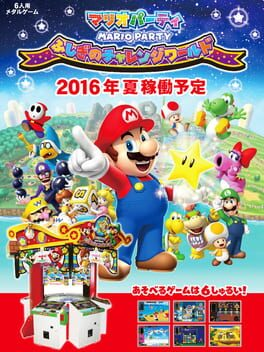
▲
1
▼
Although it was only released in Japan, there were plans for an international version of Mario Party: Challenge World slated for release in Spring 2018. A demo for an English-translated version was shown off at the 2017 Attractions Expo for the International Association of Amusement Parks and Attractions (IAAPA) using the Japanese version's six-player roulette design. However, this release date came and went with no further announcements. On May 30, 2018, the game's manufacturer Raw Thrills accidentally uploaded and quickly delisted a video on their YouTube channel showing the international version's boot-up process (using a Windows OS) with the game's title screen fully translated into English, before crashing. In October, photos were leaked to the arcade news blog Arcade Heroes revealing that the international version was still being tested, but sported a heavily revamped cabinet design that ditched the roulette and redesigned the game for only three players. This was most likely due to its original design as a roulette gambling game keeping it from being sold to most American arcades. After more radio silence and it missing IAAPA's 2018 Expo, Raw Thrills confirmed to Arcade Heroes in April 2019 that the game was cancelled, and its few prototype cabinets were sold off to select luxury entertainment centers. One confirmed location housing it as of April 2019 was the Tulsa, Oklahoma branch of Cinergy Entertainment.
Mario Party: Challenge World - IAAPA 2017 demo:
https://www.youtube.com/watch?v=8b9Fk7GKYUA
Reuploaded Raw Thrills bootup crash video:
https://www.youtube.com/watch?v=TTee-1A5U28
Arcade Heroes articles:
https://arcadeheroes.com/2018/10/09/mario-party-challenge-spotted-on-test-almost-a-year-after-reveal/
https://arcadeheroes.com/2019/04/27/newsbytes-repro-star-wars-yoke-marble-carnival-cosmotrons-unboxing-exa-arcadia-mario-party-updates/
https://www.youtube.com/watch?v=8b9Fk7GKYUA
Reuploaded Raw Thrills bootup crash video:
https://www.youtube.com/watch?v=TTee-1A5U28
Arcade Heroes articles:
https://arcadeheroes.com/2018/10/09/mario-party-challenge-spotted-on-test-almost-a-year-after-reveal/
https://arcadeheroes.com/2019/04/27/newsbytes-repro-star-wars-yoke-marble-carnival-cosmotrons-unboxing-exa-arcadia-mario-party-updates/
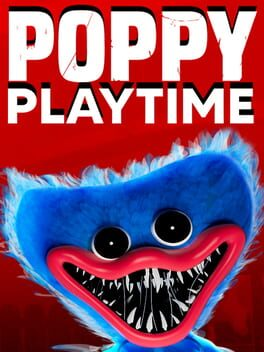
▲
1
▼
Chapter 3 of the game was originally intended to release in Winter 2023. However, due in part to several key developers leaving Mob Entertainment over "creative differences", the chapter was delayed into 2024.
Original release window:
https://screenrant.com/poppy-playtime-chapter-3-teaser-playcare-release-2023
Departures and delay:
https://www.pcgamesn.com/poppy-playtime/delayed
https://screenrant.com/poppy-playtime-chapter-3-teaser-playcare-release-2023
Departures and delay:
https://www.pcgamesn.com/poppy-playtime/delayed
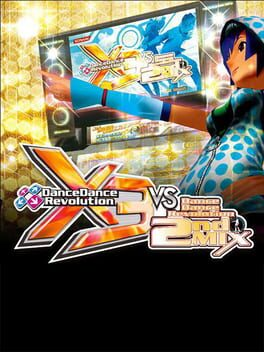
subdirectory_arrow_right Dance Dance Revolution Hottest Party 5 (Game), Dance Dance Revolution II (Game)
▲
1
▼
Dance Dance Revolution X3 VS 2ndMix's interface and background music strongly resemble that which appeared in Dance Dance Revolution II/Hottest Party 5. This connection may possibly stem from both games releasing within a month of each other, suggesting they were developed simultaneously and shared development assets.
Article on List of North American Console DDR Games:
https://remywiki.com/North_American_DanceDanceRevolution_Games#Nintendo_Wii
RemyWiki articles on DDR X3 VS 2ndMix and DDRII/HP5:
https://remywiki.com/AC_DDR_X3
https://remywiki.com/CS_DDR_II
Video of DDR II Interface:
https://www.youtube.com/watch?v=jbOi1uCYtko?t=36
Video of DDR X3 VS 2ndMix Interface:
https://www.youtube.com/watch?v=676PuAyLAts
https://remywiki.com/North_American_DanceDanceRevolution_Games#Nintendo_Wii
RemyWiki articles on DDR X3 VS 2ndMix and DDRII/HP5:
https://remywiki.com/AC_DDR_X3
https://remywiki.com/CS_DDR_II
Video of DDR II Interface:
https://www.youtube.com/watch?v=jbOi1uCYtko?t=36
Video of DDR X3 VS 2ndMix Interface:
https://www.youtube.com/watch?v=676PuAyLAts
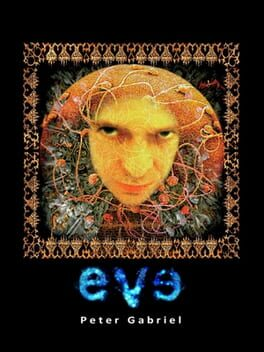
▲
1
▼
The game's North American release was originally slated for 1996, concurrently with the European release. However, the American CD-ROM market crashed that year, resulting in the intended publisher, Starwave, exiting the market in favor of website development. The game was eventually picked up by Graphix Zone, who brought it to American storefronts in May 1997.
May 3, 1997 edition of Billboard magazine (pg. 86 of 116 in the Archive.org preview):
https://archive.org/details/bub_gb_IQ8EAAAAMBAJ/page/n85/mode/2up
The Obscuritory article:
https://obscuritory.com/multimedia/peter-gabriel-eve/
https://archive.org/details/bub_gb_IQ8EAAAAMBAJ/page/n85/mode/2up
The Obscuritory article:
https://obscuritory.com/multimedia/peter-gabriel-eve/
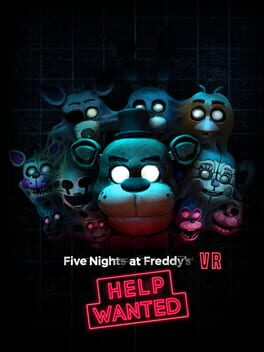
▲
1
▼
In December 2020, Steel Wool Studios announced that the "Curse of Dreadbear" DLC originally released for the game in 2019 would be ported to Xbox consoles and Nintendo Switch. While the DLC would be released for the Switch version of the game on September 28, 2021, development on the Xbox version appears to have been abandoned as there have been no updates on it since the initial announcement in 2020.
Port announcement:
https://twitter.com/SteelWoolStudio/status/1339038204125536256
Nintendo eShop page with release date:
https://www.nintendo.com/us/store/products/five-nights-at-freddys-help-wanted-curse-of-dreadbear-70050000023397-switch/
https://twitter.com/SteelWoolStudio/status/1339038204125536256
Nintendo eShop page with release date:
https://www.nintendo.com/us/store/products/five-nights-at-freddys-help-wanted-curse-of-dreadbear-70050000023397-switch/
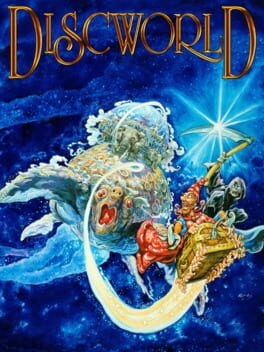
subdirectory_arrow_right Explosive Fighter Patton (Game), The Orion Conspiracy (Game), Llamatron: 2112 (Game), Psychosis (Game), Slider (Game)
This trivia has been marked as "Not Safe for Work".
It may not be appropriate for all visitors and definitely isn't appropriate for work or school environments.
Click here to unhide it.
It may not be appropriate for all visitors and definitely isn't appropriate for work or school environments.
Click here to unhide it.
▲
3
▼
Kotaku article searching for the first video game to say "fuck" (including Paranoia, The Orion Conspiracy and Discworld):
https://www.kotaku.com/the-search-for-the-first-video-game-to-say-f-1648611829
Explosive Fighter Patton swearing:
https://www.youtube.com/watch?v=fhN3stcB0is
Skweek controversy:
https://www.youtube.com/watch?v=n36EdEJLDCU?t=557
https://www.youtube.com/watch?v=OGSb2HRe_OE?t=80
Llamatron:
https://www.codetapper.com/amiga/random-rants/the-making-of-llamatron/
Discworld release date:
https://web.archive.org/web/20240210010559/https://colinsmythe.co.uk/terry-pratchett/discworld/convention-reports-index/terry-pratchett-chronology/
https://www.kotaku.com/the-search-for-the-first-video-game-to-say-f-1648611829
Explosive Fighter Patton swearing:
https://www.youtube.com/watch?v=fhN3stcB0is
Skweek controversy:
https://www.youtube.com/watch?v=n36EdEJLDCU?t=557
https://www.youtube.com/watch?v=OGSb2HRe_OE?t=80
Llamatron:
https://www.codetapper.com/amiga/random-rants/the-making-of-llamatron/
Discworld release date:
https://web.archive.org/web/20240210010559/https://colinsmythe.co.uk/terry-pratchett/discworld/convention-reports-index/terry-pratchett-chronology/
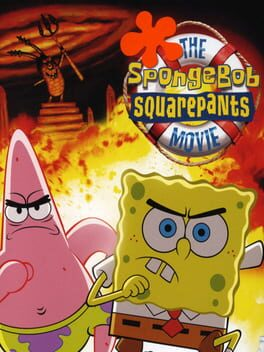
▲
1
▼
In 2012, The SpongeBob SquarePants Movie was ported to the PlayStation 3's PlayStation Network under the PlayStation 2 Classics line. However, it was taken down shortly afterwards with no official explanation. Audiences quickly inferred that the port's withdrawal was due to the poor reception it drew thanks to various emulation issues involved with it, though it may have also been due to THQ going bankrupt and Activision acquiring the license to make games based on Nickelodeon properties around the same time. Among these emulation issues, the 16:9 display (which was the default option) stretched the game rather than properly re-rendering it at a higher aspect ratio, the audio for in-engine cutscenes frequently stuttered and fell behind by up to a second, certain textures were noticeably blurry due to the game being displayed at a higher resolution than what it was designed for, and gameplay suffered from prominent input lag compared to the original release.
DidYouKnowGaming video:
https://www.youtube.com/watch?v=4CJoYsBRwrI
The Cutting Room Floor article:
https://tcrf.net/The_SpongeBob_SquarePants_Movie_(GameCube,_PlayStation_2,_Xbox)#PlayStation_3_Port
https://www.youtube.com/watch?v=4CJoYsBRwrI
The Cutting Room Floor article:
https://tcrf.net/The_SpongeBob_SquarePants_Movie_(GameCube,_PlayStation_2,_Xbox)#PlayStation_3_Port
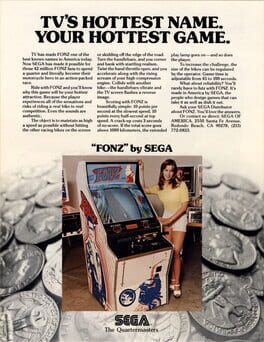
▲
4
▼
With a release date of November 1976, Fonz is the first ever video game based on an officially licensed property on record.
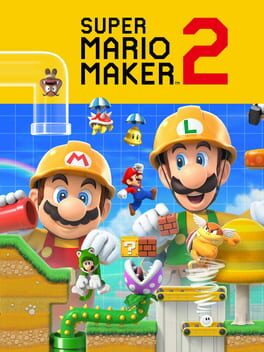
▲
1
▼
Super Mario Maker 2 is the first Mario game to be released during the Reiwa era – the reign of Naruhito as Emperor of Japan – following the abdication of Akihito on April 30, 2019. To commemorate this, Nintendo of Japan's Instagram account posted a video concurrently with Naruhito's ascension on May 1 where Mario travels through each of Japan's imperial eras since the franchise's inception, with each one being represented by a different style in Super Mario Maker 2. The Super Mario Bros. style represents the Shōwa era (Hirohito's reign from 1926 to 1989), the Super Mario World style represents the Heisei era (Akihito's reign from 1989 to 2019), and the Super Mario 3D World style represents the Reiwa era. Coincidentally, although Super Mario 3D World was released during the Heisei era, it would later be ported to the Nintendo Switch in 2021, two years after the Reiwa era's onset.

▲
1
▼
 In 2021, a 15-second clip of beta animations for the game dating back to 2006-2007 was discovered on the website of animator Michael Daubert, a former employee of the outsourcing studio The Animation Farm who produced animations for an internal pitch of an early iteration of the game. These tests showcase a completely different art style from the final game and unused gameplay elements, with Mickey shooting ink out of his body to quickly surf around, and jumping and slamming the ground to summon a tidal wave of ink to attack large Blotling enemies. This tidal wave attack also causes Mickey to lose all of his colors, turn white and become exhausted, suggesting that the known early idea of ink/paint/thinner usage changing his physical appearance was going to involve a stamina meter tied to his attacks. Mickey's early design was more stylized compared to his traditional appearance in the final game, featuring a prominently tall forehead, a lanky, stretched body, no visible mouth, and crooked oval ears. This early design would live on through an emblem used in promotional materials and as a recurring icon throughout the final game, with the inky black outline of the early design's head forming an "M".
In 2021, a 15-second clip of beta animations for the game dating back to 2006-2007 was discovered on the website of animator Michael Daubert, a former employee of the outsourcing studio The Animation Farm who produced animations for an internal pitch of an early iteration of the game. These tests showcase a completely different art style from the final game and unused gameplay elements, with Mickey shooting ink out of his body to quickly surf around, and jumping and slamming the ground to summon a tidal wave of ink to attack large Blotling enemies. This tidal wave attack also causes Mickey to lose all of his colors, turn white and become exhausted, suggesting that the known early idea of ink/paint/thinner usage changing his physical appearance was going to involve a stamina meter tied to his attacks. Mickey's early design was more stylized compared to his traditional appearance in the final game, featuring a prominently tall forehead, a lanky, stretched body, no visible mouth, and crooked oval ears. This early design would live on through an emblem used in promotional materials and as a recurring icon throughout the final game, with the inky black outline of the early design's head forming an "M".In 2024, an extended pitch trailer for this version of the game using some of the same animation footage was posted online by Thomas Heimann, another former employee of The Animation Farm. The pitch for this version of the game proposed a 2008 release date and outlined possible gameplay mechanics, an early version of the story, and early character designs for Mickey, the Phantom Blot, and the Blotlings. A model sheet for Oswald the Lucky Rabbit with character designs dating back to his initial usage in the 1920s-30s was also teased during the trailer, but he does not appear in it.
Early animation snippet:
https://www.youtube.com/watch?v=7hVrTVt0d-o
Extended pitch trailer:
https://www.youtube.com/watch?v=xkc2cPIeSx4
https://www.deviantart.com/thomasheimann/art/EpicMickey-Pitch-1012295768
Final game's title screen with emblem:
https://www.youtube.com/watch?v=KkvCZYpFU6Y?t=258
https://www.youtube.com/watch?v=7hVrTVt0d-o
Extended pitch trailer:
https://www.youtube.com/watch?v=xkc2cPIeSx4
https://www.deviantart.com/thomasheimann/art/EpicMickey-Pitch-1012295768
Final game's title screen with emblem:
https://www.youtube.com/watch?v=KkvCZYpFU6Y?t=258
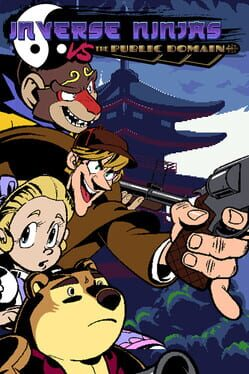
subdirectory_arrow_right Mickey Mouse (Franchise)
This trivia has been marked as "Not Safe for Work".
It may not be appropriate for all visitors and definitely isn't appropriate for work or school environments.
Click here to unhide it.
It may not be appropriate for all visitors and definitely isn't appropriate for work or school environments.
Click here to unhide it.
▲
3
▼
Thread going into the game's thought process with its use of Mickey:
https://twitter.com/InverseNinjas/status/1737544342091502015
Early release tweet:
https://twitter.com/InverseNinjas/status/1741694161110343753
Quote source:
https://twitter.com/InverseNinjas/status/1739835557017170070
https://twitter.com/InverseNinjas/status/1737544342091502015
Early release tweet:
https://twitter.com/InverseNinjas/status/1741694161110343753
Quote source:
https://twitter.com/InverseNinjas/status/1739835557017170070
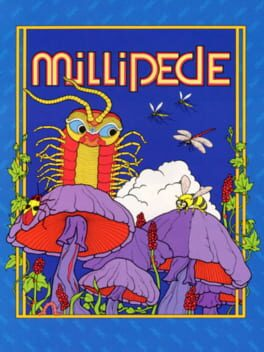
▲
2
▼
 The Nintendo Entertainment System versions of Defender II, Joust, and Millipede were all conceived as part of a failed deal between Nintendo and Atari to distribute the Famicom internationally. Development was outsourced to HAL Laboratory, who decided to publish the games themselves in 1987 after Nintendo took international distribution of the console into their own hands two years prior. One additional title was put together as part of the Atari deal, but it was never released, with none of the parties involved revealing what it was.
The Nintendo Entertainment System versions of Defender II, Joust, and Millipede were all conceived as part of a failed deal between Nintendo and Atari to distribute the Famicom internationally. Development was outsourced to HAL Laboratory, who decided to publish the games themselves in 1987 after Nintendo took international distribution of the console into their own hands two years prior. One additional title was put together as part of the Atari deal, but it was never released, with none of the parties involved revealing what it was.Because of the circumstances behind their conception, the Japanese versions of these three games all feature title screens reminiscent of Famicom launch titles, with the copyright information uniformly reading "COPYRIGHT 1983 ATARI". When Nintendo of America exported the games to North America in 1988, the title screens were made more elaborate and the copyright info was updated. The ways of accessing the game's modes are also changed in the North American release; instead of having them all available on the title screen, the player must press Start in Defender II and Millipede to bring up a menu (itself displaying additional copyright information). In Joust, pressing Start skips the menu and automatically begins Game A; the player must press Select in order to access the menu.
The development of Joust as a launch title for an Atari-distributed system would have a prominent knock-on effect on HAL and Nintendo's future. The game was one of the first titles to be programmed by Satoru Iwata, who would go on to become a vital asset to HAL thanks to his coding skills before becoming Nintendo's president in 2002, and his experiences developing Joust would help him program Balloon Fight.
The Cutting Room Floor articles:
https://tcrf.net/Defender_II_(NES)
https://tcrf.net/Joust_(NES)#Regional_Differences
https://tcrf.net/Millipede_(NES,_HAL_Laboratory)
https://tcrf.net/Defender_II_(NES)
https://tcrf.net/Joust_(NES)#Regional_Differences
https://tcrf.net/Millipede_(NES,_HAL_Laboratory)
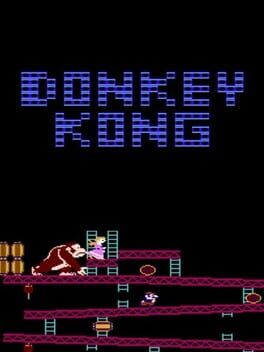
▲
1
▼
 Unusually, the 3DS version of Donkey Kong: Original Edition was originally released with an unfinished ROM predating the hack's previous Wii release. The only change in the unfinished version was that the copyright assigned the game as a 2008 release instead of 2010, suggesting that it was originally intended to be released for the 25th anniversary of Donkey Kong's Famicom port and delayed for Super Mario Bros.' anniversary. The game would soon be patched the use the Wii ROM instead.
Unusually, the 3DS version of Donkey Kong: Original Edition was originally released with an unfinished ROM predating the hack's previous Wii release. The only change in the unfinished version was that the copyright assigned the game as a 2008 release instead of 2010, suggesting that it was originally intended to be released for the 25th anniversary of Donkey Kong's Famicom port and delayed for Super Mario Bros.' anniversary. The game would soon be patched the use the Wii ROM instead.

▲
1
▼
In January 2023, the game's Steam page was pulled along with a gameplay trailer on YouTube the following month, with developer Fntastic stating that there had been trademark issues surrounding the game's title, with the game being delayed to November of that year as a result. However, the studio's founders revealed that there were already plans to delay the game prior to the trademark disputes, which was intended to be announced as part of a ten minute gameplay trailer. They also defended against claims that the game was a scam, due to being backed by publisher Mytona and evaluated on their progress regularly. They also stated that "we didn't take a penny from people: no crowdfunding, no pre-orders, no donations".
The Day Before delay announcement article:
https://www.gematsu.com/2023-01/the-day-before-for-pc-delayed-to-november-10
Fntastic planned delay article:
https://www.ign.com/articles/the-day-before-devs-say-delay-was-planned-before-trademark-dispute
YouTube trailer removal article:
https://www.thegamer.com/the-day-before-youtube-trademark-issues/
https://www.gematsu.com/2023-01/the-day-before-for-pc-delayed-to-november-10
Fntastic planned delay article:
https://www.ign.com/articles/the-day-before-devs-say-delay-was-planned-before-trademark-dispute
YouTube trailer removal article:
https://www.thegamer.com/the-day-before-youtube-trademark-issues/
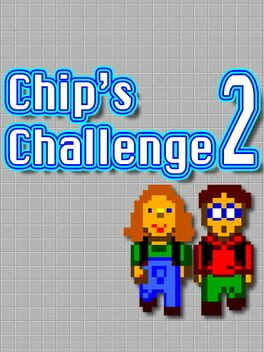
▲
2
▼
Chip's Challenge 2 was finished in 1990, two years after the completion of Chip's Challenge and a year after the latter game's release, but due to the IP being sold, it had to wait 25 years to see an official release in 2015, following five years of negotiation over the series' rights.
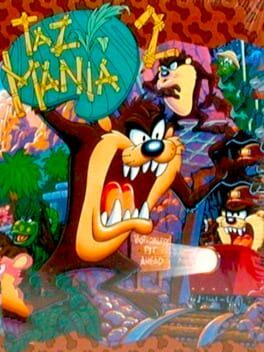
subdirectory_arrow_right Taz-Mania (Game)
▲
1
▼
There were two Game Boy games based on Taz-Mania developed roughly around the same time, but were released in each region at different points and under different names:
• The first game Taz-Mania was released in 1994 and was released in North America under that name, but in Europe the game was renamed to Looney Tunes 2: Tasmanian Devil in Island Chase. Despite this, the game's title screen was not changed and still reads as Taz-Mania.
• The second game was released in Europe in 1993 under the name Taz-Mania to compensate for the first one being rebranded to a general Looney Tunes game and had no indication of being a second Taz-Mania game. The North American version of the game would be released as Taz-Mania 2 in 1997, long after the European version of the game and two years after the show it was based on ended.
• The first game Taz-Mania was released in 1994 and was released in North America under that name, but in Europe the game was renamed to Looney Tunes 2: Tasmanian Devil in Island Chase. Despite this, the game's title screen was not changed and still reads as Taz-Mania.
• The second game was released in Europe in 1993 under the name Taz-Mania to compensate for the first one being rebranded to a general Looney Tunes game and had no indication of being a second Taz-Mania game. The North American version of the game would be released as Taz-Mania 2 in 1997, long after the European version of the game and two years after the show it was based on ended.
Looney Tunes 2: Tasmanian Devil in Island Chase gameplay:
https://www.youtube.com/watch?v=TMPO-LHgTlM#t=95
Nintendo's consumer list of released Game Boy games:
https://web.archive.org/web/20160304111407/https://www.nintendo.com/consumer/downloads/dmg_games.pdf
Box art scans with copyright information:
https://www.game-boy-database.com/game-ZM-4482-UKV.html
https://www.game-boy-database.com/game-ZT-2898-NOE.html
https://www.youtube.com/watch?v=TMPO-LHgTlM#t=95
Nintendo's consumer list of released Game Boy games:
https://web.archive.org/web/20160304111407/https://www.nintendo.com/consumer/downloads/dmg_games.pdf
Box art scans with copyright information:
https://www.game-boy-database.com/game-ZM-4482-UKV.html
https://www.game-boy-database.com/game-ZT-2898-NOE.html
| keyboard_double_arrow_leftFirst keyboard_arrow_leftPrev | Page 1 of 2 | Nextkeyboard_arrow_right Lastkeyboard_double_arrow_right |
